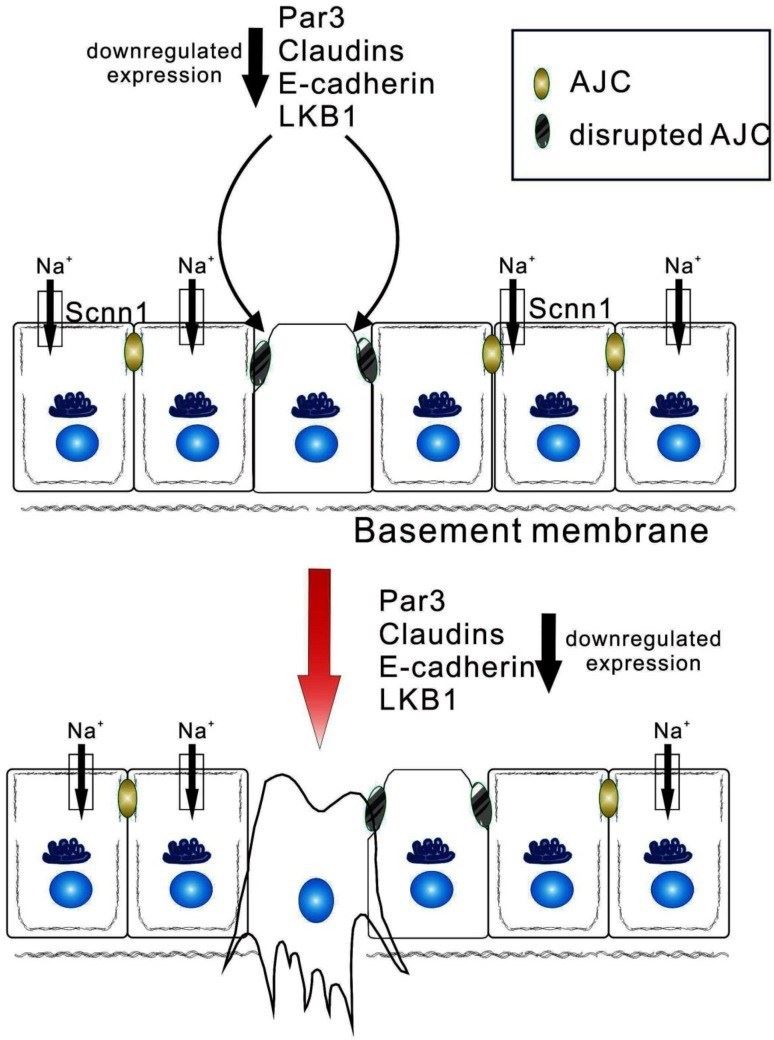The amiloride-sensitive sodium channel subunit alpha is encoded by the SCNN1A (chromosome 12p13.31) genes. The amiloride-sensitive epithelial sodium channel (ENaC) is a heterotrimer formed by the three amiloride-sensitive sodium channel subunits, α, β, and γ. All subunits are thought to have a comparable three-dimensional structure containing two transmembrane segments, intracellular N- and C-termini, and a large extracellular loop. Additionally, the C-terminus contains a proline-rich domain involved in interaction with regulatory proteins. ENaC is functional only when all three subunits are coexpressed on the epithelial membrane
| Basic Information of SCNN1A | |
| Protein Name | Amiloride-sensitive sodium channel subunit alpha |
| Gene Name | SCNN1A |
| Aliases | Alpha-NaCH, Epithelial Na(+) channel subunit alpha (Alpha-ENaC, ENaCA), Nonvoltage-gated sodium channel 1 subunit alpha, SCNEA |
| Organism | Homo sapiens (Human) |
| UniProt ID | P37088 |
| Transmembrane Times | 2 |
| Length (aa) | 669 |
| Sequence | MEGNKLEEQDSSPPQSTPGLMKGNKREEQGLGPEPAAPQQPTAEEEALIEFHRSYRELFEFFCNNTTIHGAIRLVCSQHNRMKTAFWAVLWLCTFGMMYWQFGLLFGEYFSYPVSLNINLNSDKLVFPAVTICTLNPYRYPEIKEELEELDRITEQTLFDLYKYSSFTTLVAGSRSRRDLRGTLPHPLQRLRVPPPPHGARRARSVASSLRDNNPQVDWKDWKIGFQLCNQNKSDCFYQTYSSGVDAVREWYRFHYINILSRLPETLPSLEEDTLGNFIFACRFNQVSCNQANYSHFHHPMYGNCYTFNDKNNSNLWMSSMPGINNGLSLMLRAEQNDFIPLLSTVTGARVMVHGQDEPAFMDDGGFNLRPGVETSISMRKETLDRLGGDYGDCTKNGSDVPVENLYPSKYTQQVCIHSCFQESMIKECGCAYIFYPRPQNVEYCDYRKHSSWGYCYYKLQVDFSSDHLGCFTKCRKPCSVTSYQLSAGYSRWPSVTSQEWVFQMLSRQNNYTVNNKRNGVAKVNIFFKELNYKTNSESPSVTMVTLLSNLGSQWSLWFGSSVLSVVEMAELVFDLLVIMFLMLLRRFRSRYWSPGRGGRGAQEVASTLASSPPSHFCPHPMSLSLSQPGPAPSPALTAPPPAYATLGPRPSPGGSAGASSSTCPLGGP |
ENaC mediates the rate-limiting step for sodium absorption across epithelial cells that line the distal part of the renal tubule, the distal colon, the duct of several exocrine glands, and the lung airways. In the renal tubule, sodium reabsorption by ENaC is one of the essential mechanisms involved in the regulation of sodium balance, blood volume, and blood pressure. The activity of the sodium channel is positively regulated by gluco- and mineralocorticoids. This is in part due to direct effects on transcriptional activity of Scnn1a, Scnn1b, or/and Scnn1c gene expression. Under-expression of ENaC due to mutations in the SCNN1 genes leads to type 1 pseudohypoaldosteronism.
 Fig.1 Epithelial apicobasal polarity suppresses the development of tumor to later stages. (Li, 2015)
Fig.1 Epithelial apicobasal polarity suppresses the development of tumor to later stages. (Li, 2015)
This article finds that rs4149570 and rs7956915 polymorphisms of SCNN1A might play important roles in the susceptibility to RDS, particularly in term infants.
This article identifies a mutation in the SCNN1A located at the splicing site. The mutation is definitely a new and pathogenic one, and the phenotype of the patient is milder as observed in a patient with a missense mutation.
These findings show miR-125b represses the expression of HBV in vivo by regulating SCNN1A expression.
This article reveals three novel SCNN1A gene mutations in two Chinese patients with systemic PHA1.
This article suggests that CF-like disease may be caused by complex genotypes of several genes in an oligogenic form, with rare variants interacting with environmental factors.
Membrane protein studies have advanced significantly over the past few years. Based on our versatile Magic™ membrane protein production platform, we could offer a series of membrane protein preparation services for worldwide customers in reconstitution forms as well as multiple active formats. Aided by our versatile Magic™ anti-membrane protein antibody discovery platform, we also provide customized anti-SCNN1A antibody development services.
During the past years, Creative Biolabs has successfully generated many functional membrane proteins for our global customers. We are happy to accelerate the development of our clients’ programs with our one-stop, custom-oriented service. For more detailed information, please feel free to contact us.
Reference
All listed services and products are For Research Use Only. Do Not use in any diagnostic or therapeutic applications.